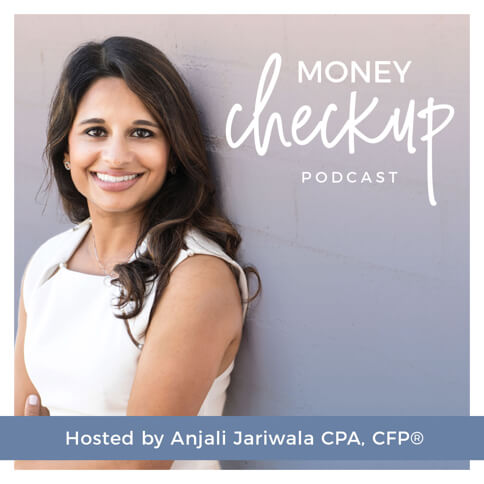A Roth IRA is a valuable option for many early-career professionals, especially those who expect their incomes to grow significantly in the future. But once you exceed Roth IRA income limits — adjusted gross income of $137,000 for single filers and $203,000 for married couples filing jointly — you can no longer contribute to a Roth IRA.
At least, not in the way you’re used to. There is another way to continue contributing to a Roth IRA. We call it the “backdoor Roth.”
With a backdoor Roth, you contribute to a traditional IRA, then convert your investment to a Roth IRA. With the traditional IRA contribution, you do not take a tax deduction. That means the basis of your IRA is the same as the value on the date of conversion. Roth income limits do not apply to these conversions, only to direct contributions.
Roth IRAs: The basics
A Roth IRA, at its core, is a retirement savings plan in which you invest money after taxes. That means you pay taxes on your income as you earn it. Then, you can invest up to $6,000 annually in your Roth plus another $1,000 if you are 50 or older.
You can withdraw the money you’ve invested, and the growth, tax-free at age 59½. You can also withdraw the money for other expenses before age 59½, such as a down payment on a home or a child’s education, anytime (with a few caveats). Since Roth IRAs are usually funded with post-tax dollars, the account grows tax free and comes out tax free in retirement. Roth IRAs are not subject to required minimum distributions, unlike other types of retirement accounts such as 401(k)s and IRAs.
Many financial professionals recommend Roth IRAs as versatile, straightforward savings tools. They’re particularly valuable for people who expect to be in much higher income brackets in the future — your contributions are taxed at your current income tax rate, and withdrawals are tax-free no matter what you’re earning then. It’s also beneficial to have a tax-free bucket of money to draw upon in retirement. Retirement accounts that you’ve contributed pre-tax dollars to will be taxed at your ordinary income tax rates when you start to take distributions.
But contributing directly to your Roth IRA is no longer allowed after your adjusted gross income crosses a certain threshold. For single filers, that limit is $137,000; for married couples filing jointly, it’s $203,000. Once you earn more than that, your can no longer make direct contributions.
Do you want to keep paying into your Roth IRA after your income surpasses those limits? Talk to your advisor or CPA about a backdoor Roth IRA.
How Backdoor Roth IRAs Work
This is the key to the backdoor Roth: Roth income limits do not apply to account conversions. Whatever you’re earning, you can invest in a nondeductible traditional IRA, then convert that account to a Roth IRA. Generally, Roth conversions are subject to tax — but if you do it correctly, you can avoid the tax implications using this strategy.
Here’s how it works:
First, try to get rid of any IRA accounts you currently have. This includes traditional IRAs which you took a tax deduction for, Rollover IRAs, and SEP IRAs. (Note that inherited IRAs are excluded from this). Removing these accounts is useful because, if you convert some of your investments into a Roth but leave money in other types of IRAs, your tax bill will be based on the proportion of money in all of your IRAs that has not yet been taxed. This is called the pro-rata rule.
Let’s use an example here. Assume you have a Rollover IRA with $20,000. You make a $6,000 nondeductible IRA contribution and convert it to a Roth. At the end of the year, you had $26,000 in total IRAs — $20,000 rollover plus $6,000 conversion. Then, divide the converted amount ($6,000) by the total ($26,000) to calculate the percentage of your conversion that is tax-free — in this case, about 23 percent. The remaining 77 percent of your contribution will be taxed at ordinary income tax rates.
To view this calculation in more detail, refer to Form 8606. A tax advisor can help you understand the tax implications of having other IRA accounts, exactly how much you owe, and what amount is tax free.
There is one way to avoid taxes when funding a Roth through the backdoor: If you or your spouse participate in a traditional employer-sponsored qualified plan that accepts rollovers, you can roll over these IRA accounts into your qualified plan. When the IRS calculates taxes on backdoor Roth conversions, it doesn’t include qualified plan balances such as a 401(k) and 403(b). If you are a solo business owner, solo 401(k)s do not count toward the pro-rata rule either.
Now for step two. Once you no longer have other IRA accounts, make a non-deductible contribution to a traditional IRA.
Next, convert funds from your IRA to a Roth IRA. You most likely will need to complete a form for the conversion. With a backdoor Roth, you are not limited to a $6,000 contribution every year — you can convert as much as you want. And you can repeat the process again the following year.
During tax season, you will receive a form 1099-R, which will show a distribution from your IRA account. This form can be confusing, so make sure to let your accountant know you did a backdoor Roth. If you prepare your own return, research the software you use to find out how to report this conversion.
Common Mistakes
You may have to claim the money you convert to a Roth IRA as income. Depending on how much money you move, this could push you into a higher tax bracket, increasing a different part of your tax bill. On the flip side, if you have some low-income years, those may be good opportunities to convert some of your IRA or 401(k) accounts into a Roth. A tax professional can help you time your conversion and minimize the tax impact.
Also, you may not be able to withdraw these funds as soon as you could normally withdraw from a contributory Roth. Converted funds are not the same as contributions. Contributions can be withdrawn tax-free at any time; converted funds need to sit in the account for five years before you can withdraw them without a penalty.
There are a host of other mistakes you can make while setting up a backdoor Roth IRA. Some investors try to make monthly contributions instead of converting a lump sum. Others think in tax years rather than calendar years.
If you want to invest in a Roth IRA using the backdoor, seek help from a tax professional to avoid these pitfalls, time conversions properly, and maximize your tax benefits along the way.
If you’re a physician or business owner and want to work with me for your financial planning, investments and tax planning, let’s schedule a time to talk!




